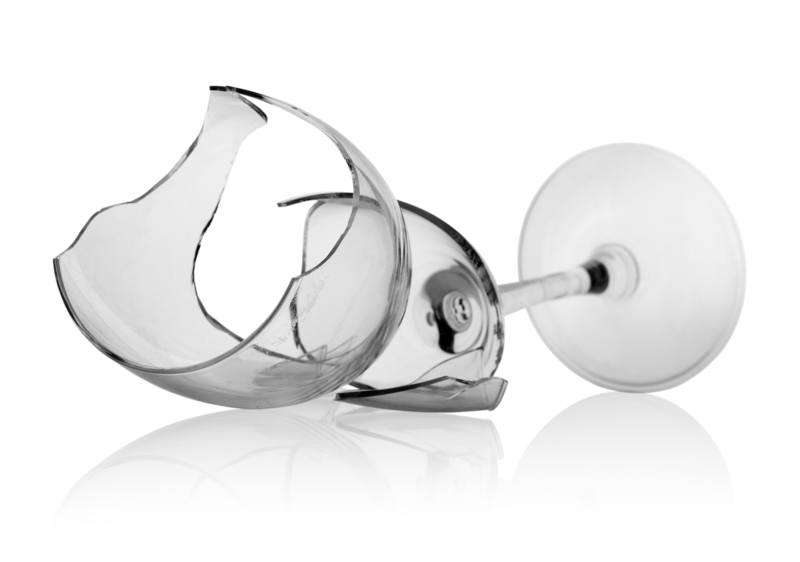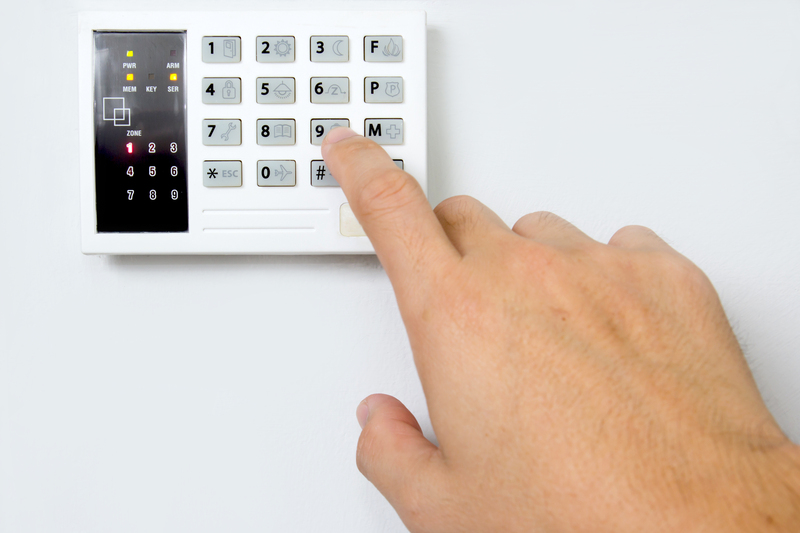DIY Tips for Moving Your Bed and Mattress
Posted on 06/06/2025

DIY Tips for Moving Your Bed and Mattress
When it's time to move your bed and mattress, whether to a new home or simply to another room, the process can seem daunting. Beds and mattresses are often large, heavy, and awkward to handle. But with the right preparation and a few strategic methods, moving your bed and mattress yourself can be manageable and even cost-effective. Follow these comprehensive DIY tips for a successful and stress-free move!

Why a Proper Move Matters for Your Bed and Mattress
Improper handling during a move can lead to damage not only to your mattress and bed frame but also to your walls, flooring, and belongings. Damaged mattresses may lose their shape or support, while bed frames can get scratched or broken. Investing time in safe and efficient moving techniques protects your investment and ensures a good night's sleep in your new space.
Table of Contents
- Preparation: Getting Ready to Move Your Bed and Mattress
- How to Disassemble Your Bed Frame
- Packing and Protecting Your Mattress
- Tips for Moving the Bed Frame
- Safely Moving Your Mattress DIY-Style
- Reassembling Your Bed in Your New Place
- Extra DIY Mattress Moving Tips
- Conclusion
Preparation: Getting Ready to Move Your Bed and Mattress
Every successful DIY move starts with thorough preparation. Save yourself time and effort by gathering the supplies and help you'll need:
- Mattress bag or plastic wrap for protection
- Moving blankets (for the bed frame and mattress)
- Furniture sliders or dolly to move heavy items easily
- Basic tools (screwdriver, wrench, pliers) for disassembling the bed
- Ziplock bags or small containers for hardware
- Straps or rope
- Markers and labels
- Help from one or two friends (especially important when lifting!)
Organize your tools and supplies ahead of time so you're not scrambling during the move. Planning is essential when it comes to DIY mattress and bed moving.
How to Disassemble Your Bed Frame
Most bed frames can't be moved in one piece, especially larger ones. Disassembling your bed frame makes it easier to transport and prevents damage. Here's how to do it:
- Remove bedding and pillows -- Strip the bed completely and pack bedding separately.
- Take off the mattress and box spring, leaning them against a wall. Never drag the mattress on the floor.
- If your bed has a headboard, footboard, or side rails, carefully detach each part. Refer to manufacturer instructions or take pictures as you go to help with reassembly.
- Use your tools to unscrew joints or remove bolts. Place all hardware in labeled bags.
- Wrap wooden or upholstered pieces in moving blankets or bubble wrap to prevent scratches.
Pro tip: Always keep the hardware and instruction manual handy for reassembly in your new home.
How to Deal With Platform, Slat, and Adjustable Beds
Platform beds and beds with slats may have additional screws or connectors.
- Remove slats individually and stack them together, binding with tape.
- Adjustable beds typically need to be unplugged and possibly disassembled in sections--refer to your owner's manual for specific guidance.
Packing and Protecting Your Mattress: Essential Steps
Mattresses are particularly vulnerable to damage from dirt, moisture, or tearing during a move. Moving your mattress safely means keeping it clean and intact. Follow these steps:
-
Use a Mattress Bag: Buy a mattress bag in the correct size (twin, full, queen, king) from a moving supply store.
- Slide your mattress into the bag, being careful not to rip it.
- Seal the bag with heavy-duty packing tape.
- Alternative Protection: If you can't get a bag, wrap the mattress in plastic sheeting or blankets. Secure tightly with tape.
- Avoid Folding Foam or Spring Mattresses: Most mattresses should be kept flat to prevent internal damage. The only exception is foam mattresses that the manufacturer explicitly says can be rolled or folded.
- Tip for Memory Foam or Hybrid Mattresses: Move these carefully. Never bend them more than necessary, as this can compromise the materials.
How to Move a Mattress Without Handles
If your mattress doesn't have handles, try using two moving straps or ropes, looped under like a sling, allowing easier carrying and less strain on your back.
Tips for Moving the Bed Frame
After disassembling and wrapping your bed frame, it's time to move it. Bed frames can be made of wood, metal, or upholstered materials, so always handle with care to avoid scratches and dents.
- Label parts clearly -- Use sticky notes or tape to mark headboard, side rails, and slats. Write their location and orientation.
- Use furniture sliders or a dolly to transport heavier sections, especially if you need to maneuver up or down stairs.
- Teamwork -- Don't try carrying large pieces alone. Two people can better navigate doorways and avoid wall damage.
- Car transport -- Most bed frames, once disassembled, should fit into a moving van or large SUV. Tie down parts to prevent shifting in transit.
Safely Moving Your Mattress DIY-Style
Mattresses are bulky and awkward, but with the correct technique, you can avoid injury and protect your investment.
Carrying Your Mattress Out
- Clear the path -- Ensure your route is free of obstacles, corners, or slippery spots.
- Grip from underneath -- With two people, one at each end, lift with your legs, not your back.
- Don't drag -- Dragging can tear the mattress fabric and make it dirty.
- Avoid folding unless designed for it -- Only certain foam mattresses can safely be folded or rolled.
Pro tip: For tight staircases or hallways, tilt the mattress on its side and angle it gently around corners.
Transporting a Mattress by Car or Truck
If you're using a pickup truck or van:
- Lay the mattress flat, if space allows, for maximum protection.
- If placed on its side, secure it well with ratchet straps or bungee cords.
- Never stack objects on top of the mattress to avoid damage.
If using the roof of a car (for short distances only):
- Center the mattress and secure with strong rope or straps through the windows.
- Double check that the mattress does not obstruct your view or overhang the vehicle dangerously.
Never attempt to transport a mattress without proper securing--it can fly off or be damaged by wind.
Reassembling Your Bed in Your New Place
Once you've successfully moved your bed and mattress into your new space, follow these steps to put everything back together:
- Bring all labeled frame pieces, hardware, and your mattress to the room where the bed will be placed.
- Follow your disassembly photos or manufacturer instructions for reassembly.
- Assemble the frame first, ensuring all bolts are tight.
- Add slats or platform supports, then place the box spring if applicable, and finally the mattress.
- Double check that the frame is steady and doesn't wobble before dressing the bed with bedding.
Extra DIY Mattress Moving Tips
- Clean your mattress before and after moving -- Vacuum the mattress surface and let it air out before use.
- Don't store a mattress on its side for long periods -- This may cause sagging or deformation, especially with springs.
- Check for damage -- Inspect your bed frame and mattress after moving for any new tears, dents, or broken pieces.
- Repair minor scratches -- Use a marker or filler on wood frames for aesthetic fixes.
- Recycle or donate old mattresses -- If you upgrade while moving, search for local recycling programs or charities.
Common Mistakes to Avoid When Moving Your Bed and Mattress
- Not measuring doorways/hallways -- Always check that your bed and mattress fit through all access points before starting.
- Moving without protective covers -- Skipping This step leaves your mattress vulnerable to dirt and rips.
- Forgetting to keep hardware together -- Use sturdy bags and label everything.
- Trying to move large items solo -- Always get help to avoid injury and damage.
- Improper securing during transit -- A mattress flapping in the wind can become unusable.
Conclusion
Moving your bed and mattress yourself saves money and gives you control over the process, but it requires careful planning and attention to detail. By preparing your supplies, disassembling your bed correctly, protecting your mattress, and enlisting the help of friends, you can ensure your possessions arrive in perfect condition.
Remember: Use proper covers, don't cut corners with safety, and keep all small parts organized. If you follow these DIY tips for moving your bed and mattress, you'll enjoy both a smooth move and a comfortable, restful sleep in your new home.
Looking for more moving advice? Check out our other DIY moving tips and how-to guides so your next move is hassle-free and efficient!



